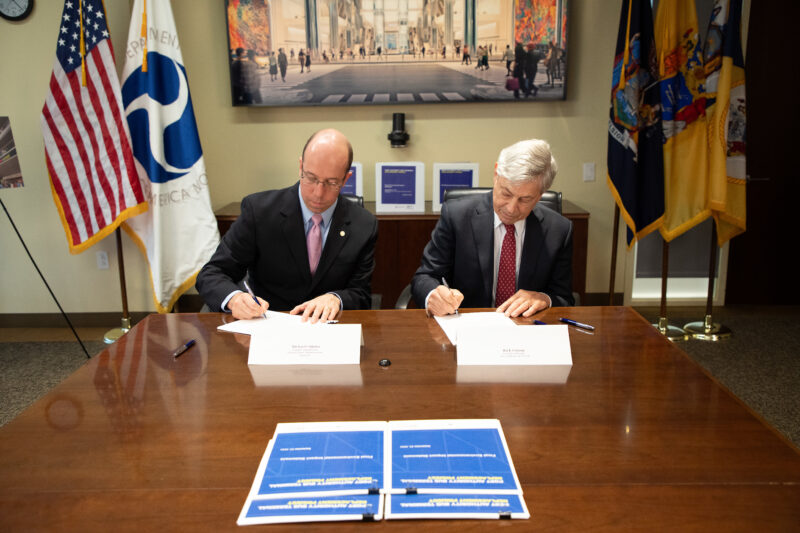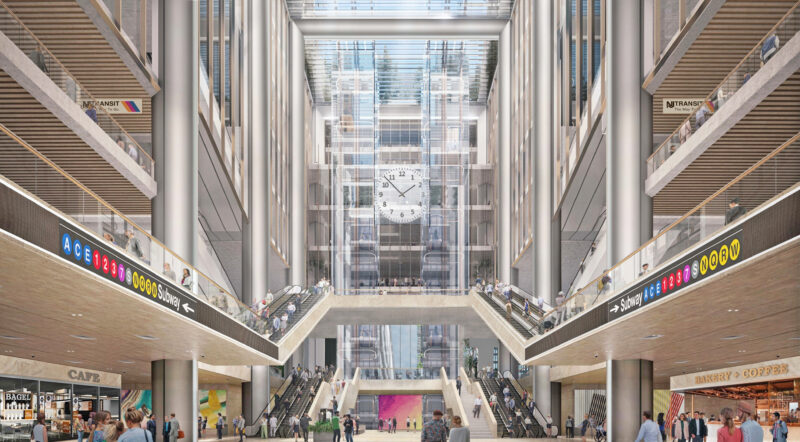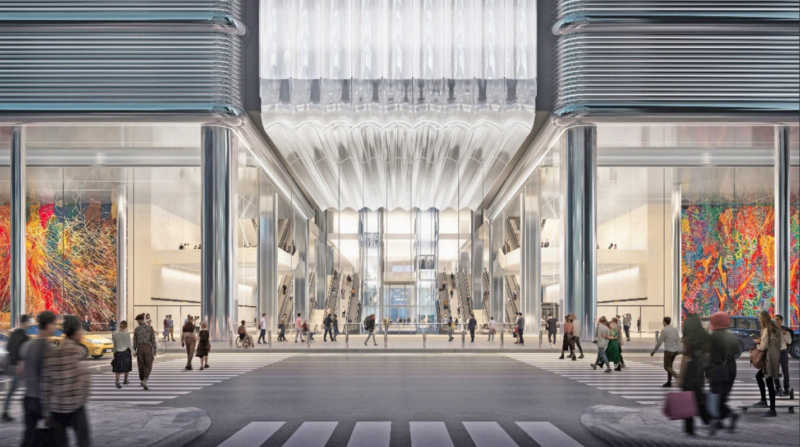Infra
Work Progresses on New York’s Midtown Bus Terminal Replacement Project

The Port Authority of New York and New Jersey, in partnership with the Federal Transit Administration (FTA), has reached a significant milestone in its Midtown Bus Terminal replacement project with the signing of the Final Environmental Impact Statement (FEIS).
This key development brings the long-awaited project closer to realisation, with a federal record of decision expected soon.
The signing follows an extensive review process that involved public hearings earlier this year, where more than 700 comments were submitted.
Signing the final environmental impact statement
© The Port Authority of New York and New Jersey
The Midtown Bus Terminal, which has served New York City for 74 years, is functionally obsolete and rundown. The new terminal promises to replace it with a 10 billion USD world-class facility, ensuring a modern, efficient, and sustainable gateway for New York and New Jersey commuters.

A rendering of the new Midtown Bus Terminal
© The Port Authority of New York and New Jersey
This new terminal is designed to support future demand and offer a vastly improved customer experience.
Port Authority Chairman Kevin O’Toole said:
Signing the final environmental impact statement brings us closer to finally replacing what’s been a commuters’ nightmare for decades with what will be a beautiful, efficient new bus terminal that will be the world-class gateway our region deserves.
The new Midtown Bus Terminal will feature a 2.1 million-square-foot main terminal, a storage and staging building, and new ramps leading directly into the Lincoln Tunnel.

A rendering of the new Midtown Bus Terminal
© The Port Authority of New York and New Jersey
The design also includes an iconic atrium entrance on 41st Street and Eighth Avenue, enhanced street-level retail, and a multi-story indoor atrium that will greatly improve both the commuter and community experience.
Some key features of the project include:
- Phased Construction Approach: A temporary terminal and new ramps are expected to be completed by 2028, with the main terminal slated for completion by 2032.
- Sustainability: The terminal is designed with a focus on net-zero emissions, serving an all-electric bus fleet and implementing state-of-the-art sustainability measures, including LEED certification, renewable energy systems, and heat recovery technology.
- Public Amenities: Once completed, the terminal will include 3.5 acres of publicly accessible green space, new concessions, retail outlets, and modern facades that will enhance the aesthetic of the surrounding area.
- Community Benefits: The project reflects extensive public input and promises to reduce curbside bus congestion, improving the neighbourhood environment and traffic flow.
Rick Cotton, Executive Director of the Port Authority said:
The final environmental impact statement is a critical milestone in our plans to replace the worst infrastructure eyesore in the nation with a new best-in-class bus terminal befitting this region that will serve commuters for the foreseeable future.
The terminal’s expanded capacity will handle projected growth and bring intercity buses, currently using city streets, into the terminal, improving both transportation and community livability.
In addition to improving transportation efficiency, the project is expected to create 6,000 union construction jobs, contributing significantly to the regional economy.
The facility will be constructed entirely on existing Port Authority property, minimising the impact on private landowners.
The phased construction approach also ensures minimal disruption to current operations, with the storage and staging facility being built first to serve as a temporary terminal during the main terminal’s reconstruction.










